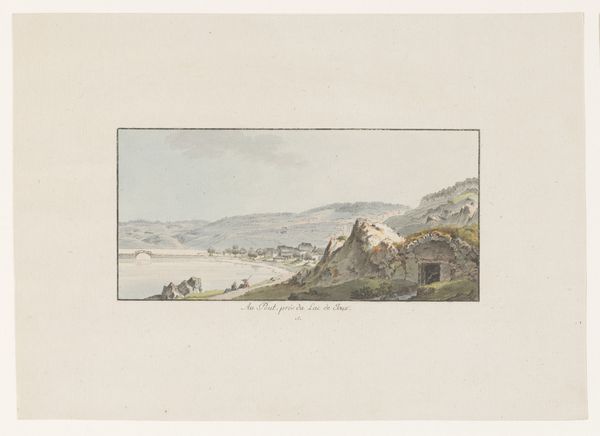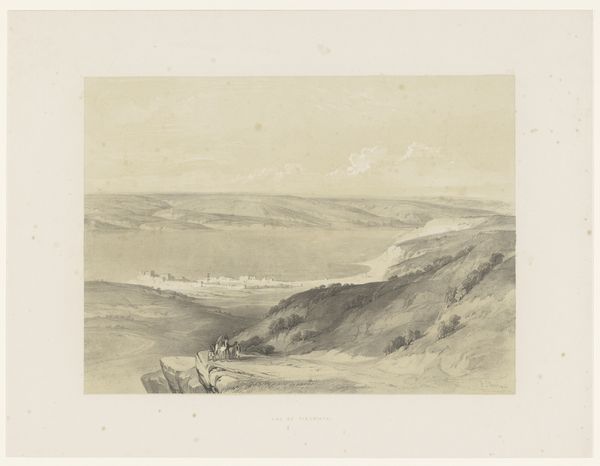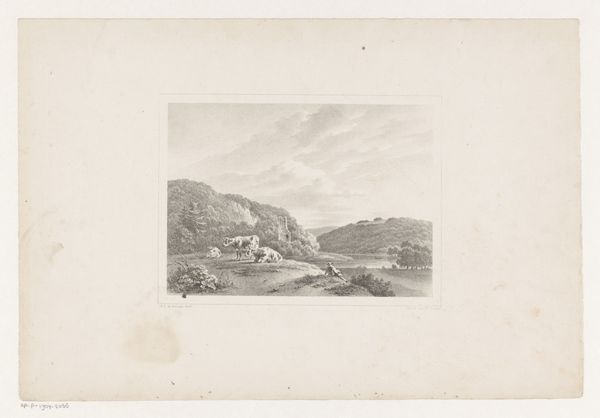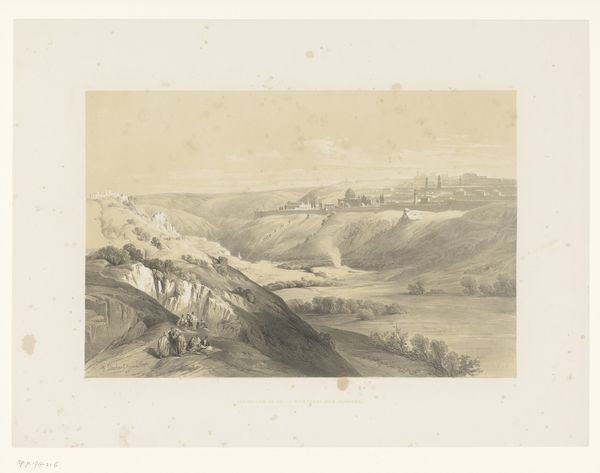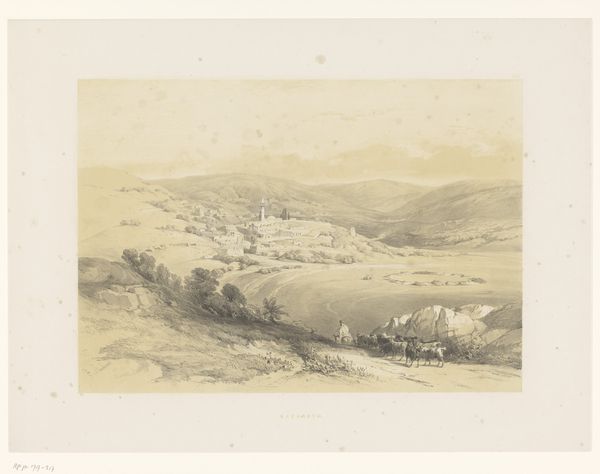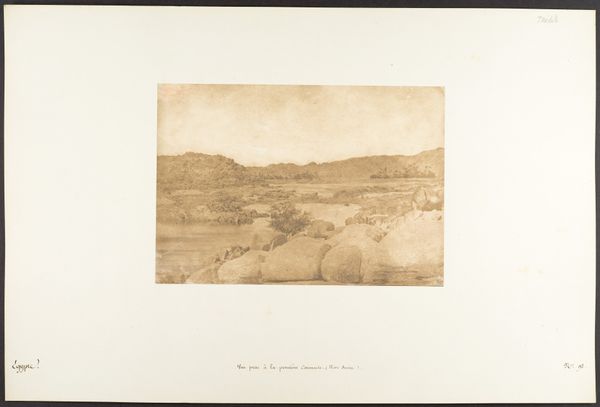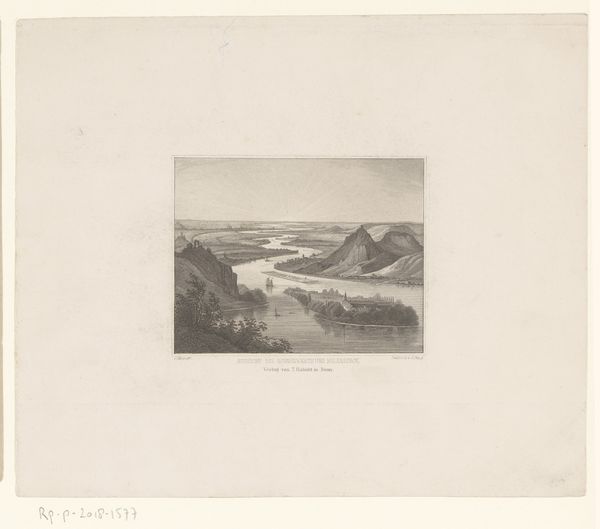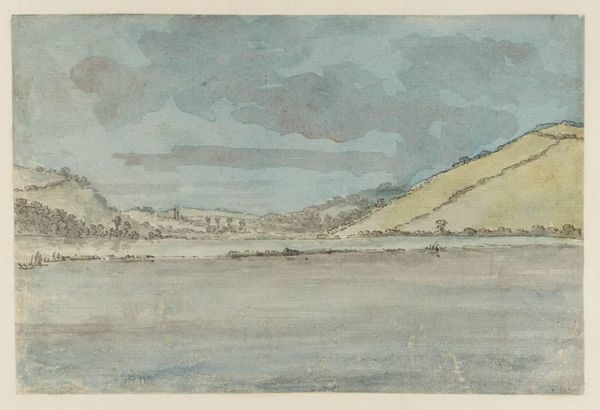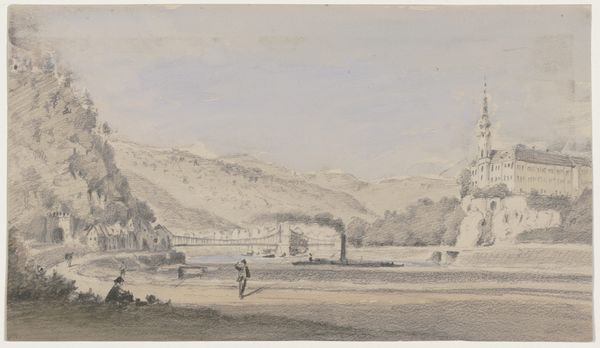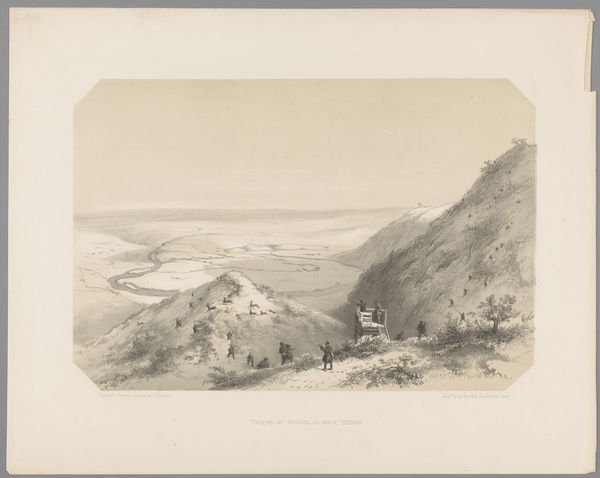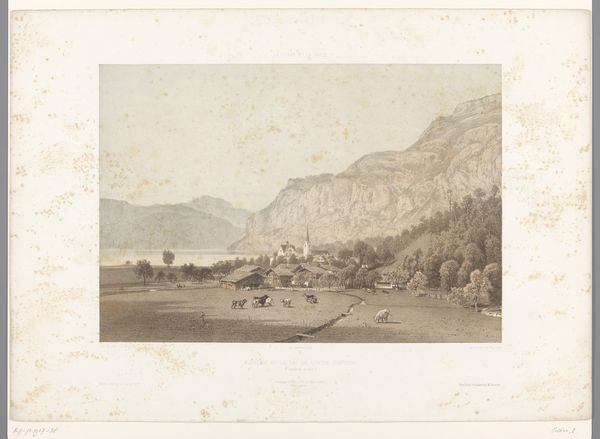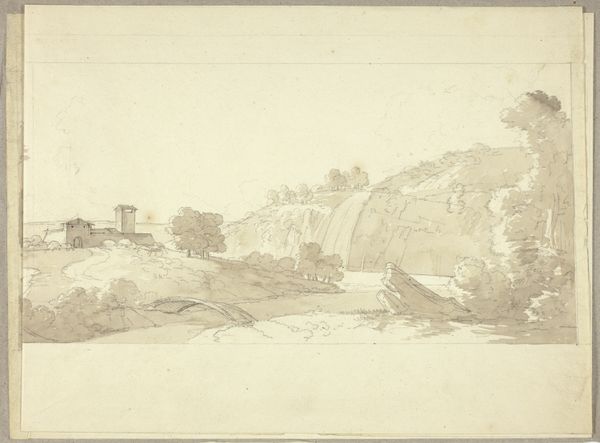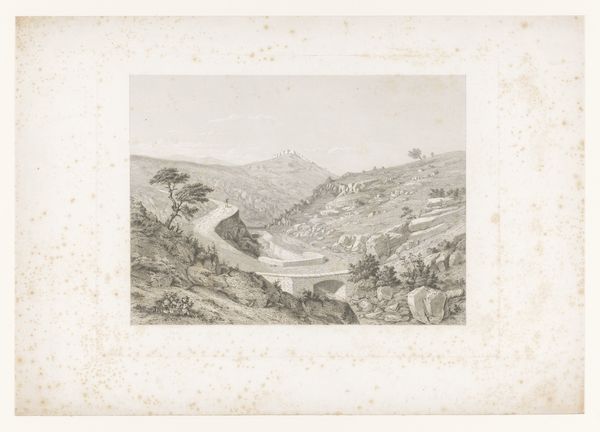
plein-air, watercolor
#
impressionism
#
plein-air
#
landscape
#
river
#
watercolor
#
watercolour illustration
Dimensions: height 257 mm, width 394 mm
Copyright: Rijks Museum: Open Domain
Curator: What strikes me immediately about Julius Jacobus van de Sande Bakhuyzen’s “Gezicht op de Maas"—likely created sometime between 1835 and 1925, now housed at the Rijksmuseum—is the stillness. It's like the world is holding its breath. Editor: Yes, there's a remarkable tranquility, an almost melancholic feel, especially given it’s rendered in watercolor, an often energetic medium. Look how the washes blend, almost dissolving the scene. It brings to mind the laborious practice of painting *en plein air*. I wonder how Bakhuyzen situated himself relative to the river traffic—and the workers, the boats... the economic context surrounding that very water. Curator: Exactly, that use of watercolor lends itself to capturing transient light and atmosphere; it breathes life into what otherwise might feel static. I'm drawn to the subtle gradations in the sky, the way the color shifts as it nears the horizon line; it's quite captivating. The paper almost glows! I think of his mindset trying to convey the sensation of being there…did he feel free in front of that wide open landscape? Editor: Well, let’s consider the social aspect; those details matter as much as freedom. Was Bakhuyzen thinking about the laborers navigating these waterways? The work highlights the accessibility and cost of watercolour during this period. Watercolor paints, brushes and paper became more readily available; a democratic art form emerged offering expanded art market accessibility during the industrial era. Curator: Absolutely. While I resonate deeply with the materiality and democratization of the art, I perceive something beyond pure socio-economic factors at play. The misty veils create a dreamlike distance from reality, wouldn’t you agree? The blurred lines, suggesting ephemerality and a quiet longing that is nearly tangible…it’s quite a paradox! Editor: A useful tension indeed. Bakhuyzen gives us a specific place, yet with his chosen materials also gestures toward art for Everyman. I find that compelling. Curator: The experience gives me much to ponder, how an object as everyday as water can reveal the unseen poetry humming just beneath the surface. Editor: Right, reminding us that the most profound artistic statements are often rooted in accessible means. The social is in the stroke, literally.
Comments
No comments
Be the first to comment and join the conversation on the ultimate creative platform.
